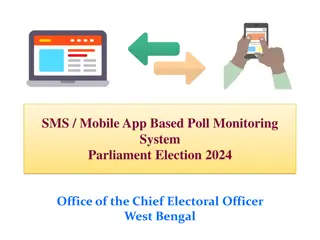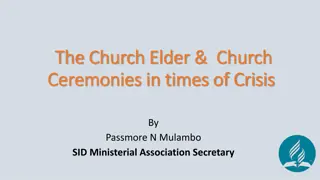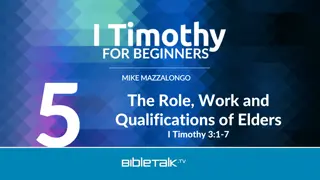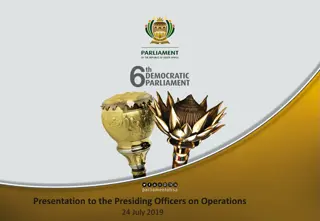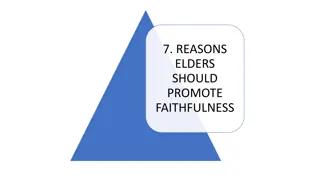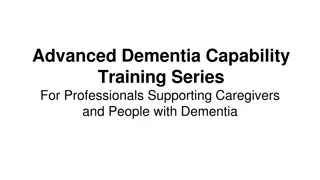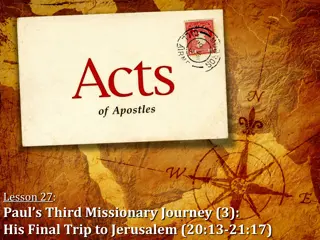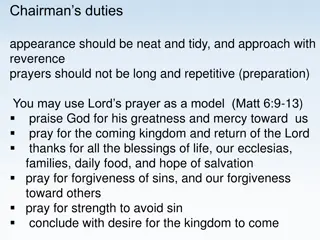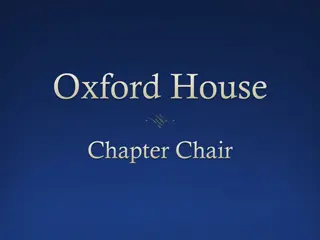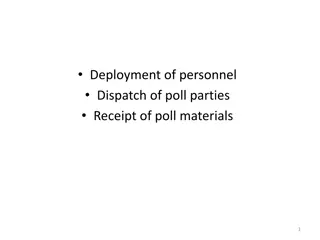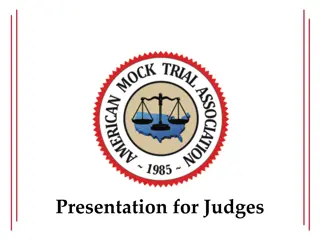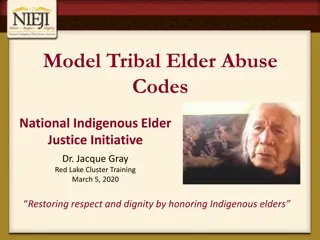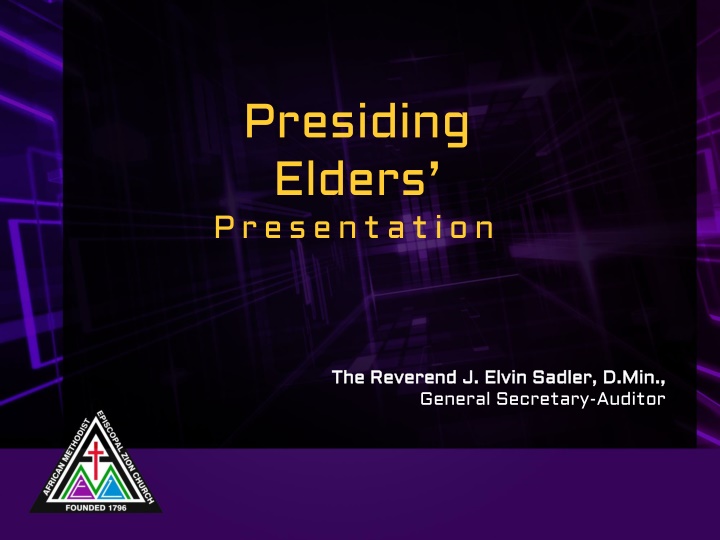
Empowering Presiding Elders for Effective Leadership Training
Equip Presiding Elders with training to enhance their effectiveness in handling reports for Conferences. Learn about the vital role of Presiding Elders as connecting links between the Bishop and local congregations, drawing inspiration from historical Methodism practices.
Download Presentation

Please find below an Image/Link to download the presentation.
The content on the website is provided AS IS for your information and personal use only. It may not be sold, licensed, or shared on other websites without obtaining consent from the author. If you encounter any issues during the download, it is possible that the publisher has removed the file from their server.
You are allowed to download the files provided on this website for personal or commercial use, subject to the condition that they are used lawfully. All files are the property of their respective owners.
The content on the website is provided AS IS for your information and personal use only. It may not be sold, licensed, or shared on other websites without obtaining consent from the author.
E N D
Presentation Transcript
Presiding Elders Presentation The Reverend J. Elvin Sadler, The Reverend J. Elvin Sadler, D.Min General Secretary-Auditor D.Min., .,
Purpose The purpose of this training is to equip Presiding Elders (P.E.) with the tools necessary to become more effective in the execution of their responsibilities regarding the completion and evaluation of reports for Quarterly, District and Annual Conferences. Presiding Elders will be taken through the actual training of inputting information, as we as being given tools to assist them in more effectively equipping Pastors
Vital Link One of the most important links in helping congregations to grow and flourish is the office of the Presiding Elder. They serve as the Connecting Link between the office of the Bishop and the local congregation. John Wesley, as he began to establish and formulate the Methodist movement, understood that he could not be everywhere at the same time. Wesley created Assistants . These were spiritually mature ministers, who served as extensions of Wesley that helped to carry the message of Wesley forward to the
Assistants They also helped to nurture and develop younger ministers, teaching them the importance of Methodist Polity, as well as conveying the vision of Wesley. They equipped them with the necessary skills of preaching, teaching and administration and would give Wesley an evaluation of each circuit under their authority.
Presiding Elders As Assistants were important to the growth and success of Wesley s early movement, Presiding Elders have served/serve as a vital link to the success and growth of Zion. As extensions of the Bishop, Presiding Elders have the unique and solemn responsibility of carrying the message and vision of the Bishop throughout their Districts. As the early Zion Methodist movement expanded, Bishops appointed Circuit Riders to oversee the work, in the Bishop s absence. These Elders were instrumental in
Quarterly & District Conferences They provided this evaluation and feedback to the Bishops through two established meetings: The Quarterly Conference, which occurred four times a year and the District Conference, which occurred annually, in preparation for the Annual Conference. The purpose of these evaluative sessions were threefold: 1. To assess the strength of the local church; 2. To provide training and development to the Pastor and Leaders (Official Family) 3. To convey the sentiments of the Bishop and Connection regarding vision, information, doctrine and polity. These two meetings were, in essence, evaluative and training sessions.
Presiding Elder Roles important responsibilities of the Presiding Elder haven t changed: they have oftentimes been misplaced; As we introduce a new model for reporting, we would like to also introduce/re-introduce a model of training and evaluation for the Quarterly Conference. The following is an outline of the new model. While our Book of Discipline outlines the format of the Quarterly Conference, I would like to suggest how we go about The reality is that these two very
Before 1. Prior to the Quarterly Conference, the Presiding Elder will receive the reports of each church in an electronic folder. 2. This will give the P.E. an opportunity to review reports and to make observations. 3. The P.E. will be able to observe both strengths and areas of concern, where the congregation may be able to address concerns and make necessary course corrections. 4. This will also serve as a time for the P.E. to emphasize the Vision and Program of the Bishop (possibly the Quadrennial and Episcopal District themes) and prepare a 15- 20 minute presentation on matters of importance for that quarter, as well as a short training on some leadership or spiritual
During 1. During the Quarter, following devotion and roll call, the P.E. would share the quarterly presentation (P.E. Address), 2. Hear the major reports and give findings from observations (Trustees, Stewards, Stewardess, M.O.K., Class Leaders (Leader of Class Leaders report with others attached), Deaconess, CED and Church School, WH&OMS (cumulative report), local preachers and exhorters and Pastor) 3. Hear several auxiliary reports of those ministries that have done extraordinary things, or who have best practices during that quarter. 4. Disciplinary Questions. 5. Passing of the Character. 6. The Reading of the minutes (minutes also stored in OneDrive.
After 1. After the Quarter, the P.E. will have a time for a follow up evaluation with the Pastor: 2. Pastoral Development Plan (PDP)-The Elder will be able to evaluate the Pastor in key areas of ministry. a) The P.E. will do a baseline evaluation with the Pastor at the beginning of the year and subsequent evaluations quarterly. b) Shortly after each Quarterly Conference, the P.E. will sit down with the Pastor and grade PDP. 3. Quarterly Conference Evaluation-Each church will also be evaluated on the effectiveness of the Quarter. (No Quarter should last more than 60-90 minutes, if all reports are submitted timely (recommend a week before the actual Q.C.) and people are
Excellence in Ministry diagnostician and mentor. The Presiding Elder is there to assist the Bishop with creating healthy congregations. Healthy congregations create ministries of excellence. Healthy ministries of excellence happen as a result of effective evaluation, guidance and development. When congregations become healthy and strive towards excellence, they create an atmosphere for growth. Presiding Elders, in cooperation and under the auspices of the Presiding Bishop, can play a vital role in creating ministries of excellence. The role of the Presiding Elder is that of
Q&A This ends the presentation; are there any questions? Once we are satisfied with the information you have provided, we will release it to your churches within the next week or so. We will contact you to let you know when. We are also providing you with the user IDs for your churches. Please provide this information them and let them. They are able to use their Office 365 Enterprise E1 license now. If you need to contact us, you can go to the website to the contacts page Help Desk and log their questions. They will receive a response within 24-48 hours. As a last email the office:


